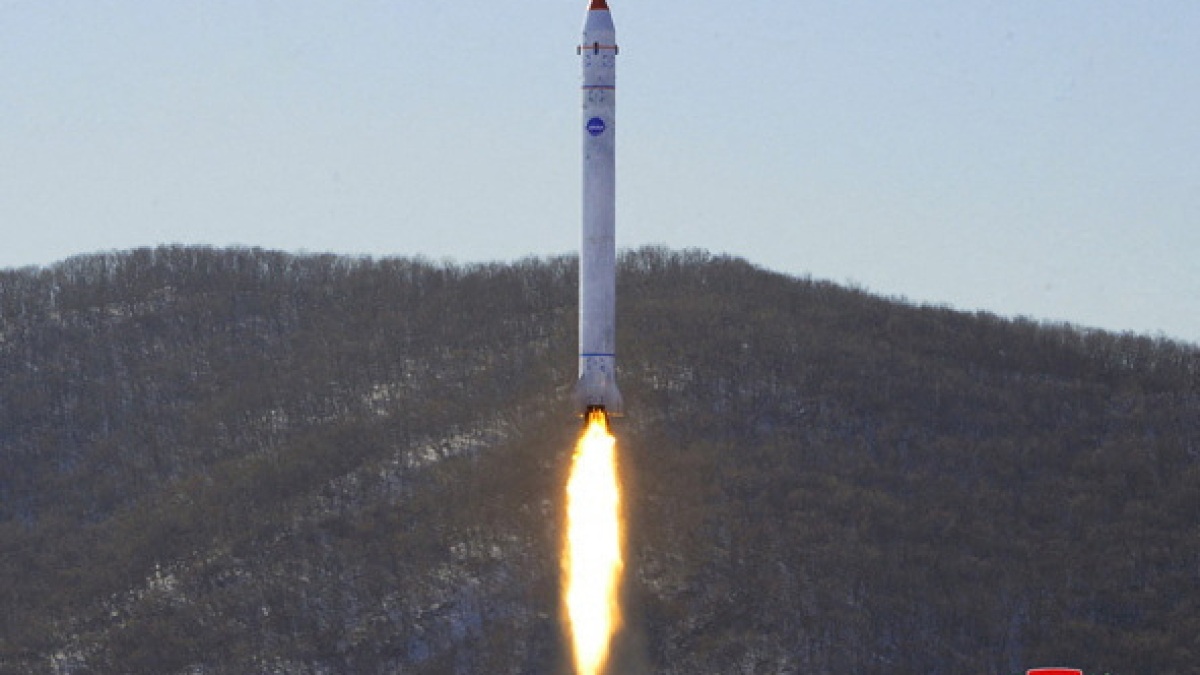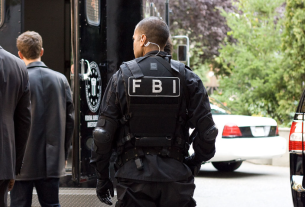[ad_1]
N Korea has released satellite imagery of South Korea’s Seoul and Incheon cities presumed to have been shot during test.
North Korea has conducted an “important, final phase” test in the development of a military reconnaissance satellite, which the country plans to complete by April 2023, North Korean state media has reported.
The Korean Central News Agency (KCNA) reported on Monday that North Korea’s National Aerospace Development Administration conducted the test on Sunday at the country’s Sohae satellite launching station in Cholsan, in North Pyongan Province.
A rocket carrying what was described as a “test-piece satellite” — including multiple cameras, image transmitters and receivers, a control device and a storage battery — was launched at a “lofted angle” to an altitude of 500km (311 miles), according to KCNA.
According to KCNA, the test was designed to review satellite imaging capabilities, data transmission, and a ground control system.
“We confirmed important technical indicators such as camera operating technology in the space environment, data processing and transmission ability of the communication devices, tracking and control accuracy of the ground control system,” an unnamed North Korean aerospace spokesperson said in the KCNA dispatch.
North Korea plans to complete “preparations for the first military reconnaissance satellite by April, 2023,” the official said in the KCNA report.
South Korea’s Yonhap news agency reported on Monday that KCNA also released satellite imagery of the South Korean capital “Seoul and its adjacent city of Incheon presumed to be shot from the test-piece satellite”.
🆕 Just In: North Korea says yesterday’s rocket launch was part of its tests for a military reconnaissance satellite. Page 2 of Monday’s Rodong Sinmun carries an image of the launch and a photo talen by the satellite of downtown Seoul. (cont) pic.twitter.com/UUjS8WryX8
— Martyn Williams (@martyn_williams) December 18, 2022
On Sunday, North Korea also fired two medium-range ballistic missiles, which flew for an estimated 500km (311 miles) before splashing down in the sea off the country’s eastern coast. On Friday, Pyongyang announced that it had tested a high-thrust solid-fuel engine which experts said would facilitate quicker and more mobile launch of its ballistic missile arsenal.
In an emergency meeting on Sunday, top South Korean security officials deplored what they described as North Korea’s continued provocations that they said came despite “the plight of its citizens moaning in hunger and cold due to a serious food shortage”.
South Korea will respond by boosting trilateral security cooperation with the United States and Japan, according to South Korea’s presidential office.
North Korean leader Kim Jong Un has promised to develop high-tech weaponry — including spy satellites and tactical nuclear weapons — as a means to both deter and provide real-time information on military actions by the US and regional allies South Korea and Japan, which he claims are threatening his country.
Pyongyang has test-fired an unprecedented number of ballistic missiles this year, including a Hwasong-17 intercontinental ballistic missile (ICBM) — called the ‘monster missile’ — in defiance of international sanctions.
On Friday, the Japanese government adopted a national security strategy that would allow it to carry out preemptive strikes and double its military spending to give itself more offensive footing against threats from China and North Korea.
The strategy marks a significant break from Japan’s strictly self-defence-only post-World War II military posture. The Japanese strategy names China as “the biggest strategic challenge”, ahead of North Korea and Russia, to Japan’s efforts to ensure peace, safety and stability.
Japan’s Defence Ministry also said on Sunday that it had detected a fleet of five Chinese warships, including an aircraft carrier off the southern Japanese island of Okidaitojima the previous day. Ministry officials said Chinese fighter jets and helicopters were engaging in takeoff and landing exercises on the carrier and that Japan responded by scrambling fighter jets and dispatching a destroyer to the area.
[ad_2]
Source link



